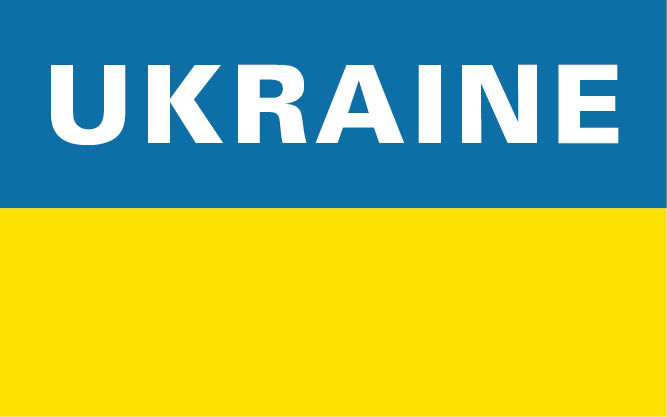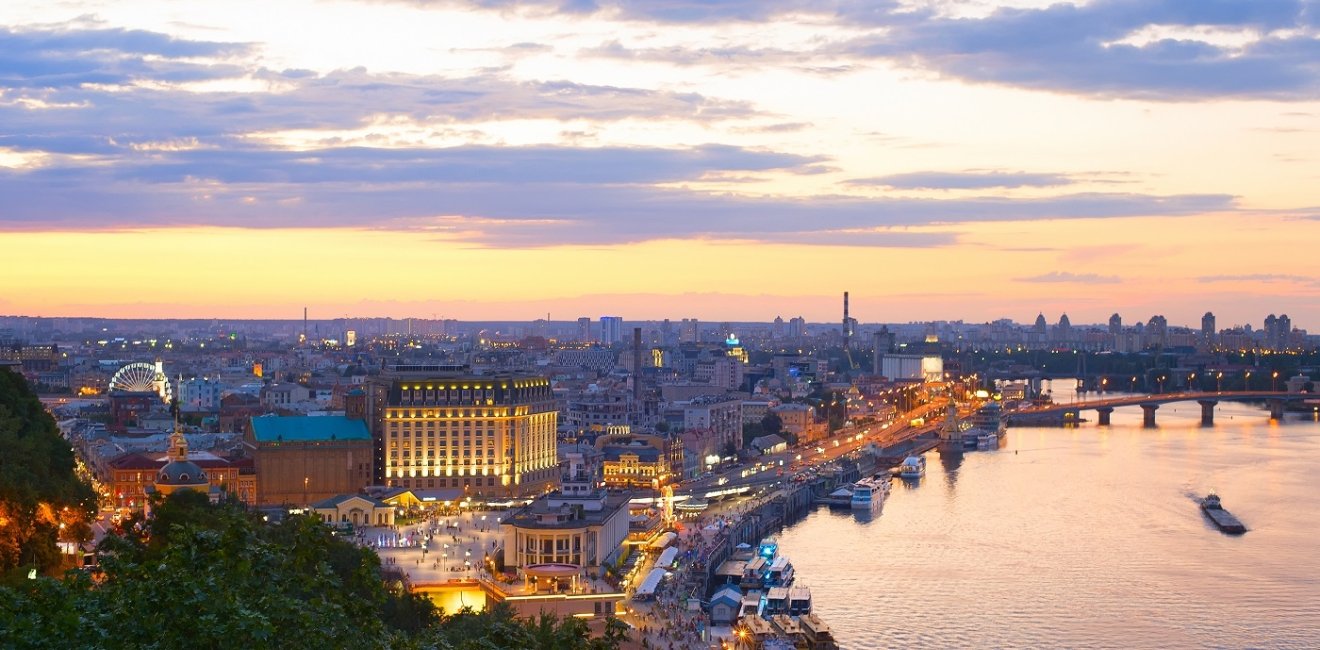
A blog of the Kennan Institute
BY BLAIR A. RUBLE
Late in June, as Kyivians struggled to recreate an approximation of prewar life, the youthful promoters of the On Time music and arts festival converged on several former factories in the capital’s Podil district that have been the go-to place for all-weekend raves and cutting-edge art exhibits. Billed as the first large-scale alternative music and arts event since the invasion, hundreds of young Kyivian hipsters poured into nightclubs and art galleries centered around a 19th century ribbon factory to wash the traumas of war at least briefly from mind.
Grunge bands, techno music, and metalcore groups drowned out the previous weeks of war even as that conflict continued (and Kyiv would again be hit by missile attacks in the weeks ahead). And while the music would eventually stop as revelers succumbed to exhaustion, the work of painters, sculptors, photographers, textile artists, and illustrators remains. This work, on display at On Time’s art galleries, tries to capture the havoc of war and resist Russian efforts to obliterate an autonomous Ukrainian culture. It acts as therapy for creator and viewer alike.
The spontaneity of the artists bringing their works to the On Time festival does not obscure the rich and varied local art scene that nurtured the art. In late 2021—before the war—Rutgers University’s Zimmerli Art Museum mounted an important six-month exhibit tracing the transformation of Kyiv’s undistinguished late Soviet art scene of the 1970s and early 1980s into the global phenomenon it had become by the mid-1990s. Guest research curator Olena Martynyuk and curator Julia Tulovsky argued that, between 1985 and 1993, “the calm waters of the culturally provincial capital of the Ukrainian Soviet Republic became radically stirred with new and daring art made publicly visible for the first time since the avant-garde period.” This explosion of styles, rediscovered histories, and newly found freedoms blossoming against the background of the collapsing Soviet empire, the Chernobyl nuclear disaster of 1986, and increasing economic scarcity created an effect of baroque excess.
These developments garnered new energy following Ukrainian independence. Kyiv’s art scene bristled with work by committed amateurs selling their works on the streets, an acclaimed street mural movement (see Focus Ukraine piece “Reclaiming Ukrainian Streets Through Art” of April 15, 2022), and the art of international artists such as self-described neo-avant-gardist Viktor Sydorenko. A robust, vibrant, and varied art scene had solidified prior to the Russian invasion.
Kyiv’s artists have responded to the war with determination. Since the Ukrainian victory in the Battle of Kyiv last spring, the art community has opened exhibitions, raised funds for the war effort, and presented new works at numerous galleries which are keeping their doors open. A month ago, Kyiv Post correspondent Aleksandra Klitina visited several small galleries tucked away on small streets around the city’s cultural hub surrounding St. Sophia’s Cathedral. She said textile artist Zinaida Kubar’s painted and woven works “united the present with the cultural code and the energy of my land;” Anton Lohov’s “The Sun Will Rise in Crimea,” offered optimism for the future, and Matvei Vaisberg’s “Road Diary” showed off work the well-known painter has curated while a refugee in Germany.
Visual artists throughout history have always responded to war, using their non-verbal language to delve into the deep emotions unleashed by conflict. Works exploring horror, grief, fear, anger, and hope revealing humankind’s creativity at its best repeatedly go along with the actions of humans at our worst. Perhaps Kyiv’s resurgent art scene is nothing more than one such instance among thousands.
Time must pass before anyone will understand whether works of lasting primal power—such as Francisco Goya’s “The Third of May 1808” or Pablo Picasso’s “Guernica”—will emerge from the current conflict. We already know that the artists of Kyiv are neither surrendering nor fleeing. They are using their talents to engage the moment and their fellow Ukrainians, displaying and encouraging a spirit of resistance and composure.
The opinions expressed in this article are those solely of the author and do not reflect the views of the Kennan Institute.
Author

Former Wilson Center Vice President for Programs (2014-2017); Director of the Comparative Urban Studies Program/Urban Sustainability Laboratory (1992-2017); Director of the Kennan Institute for Advanced Russian Studies (1989-2012) and Director of the Program on Global Sustainability and Resilience (2012-2014)

Kennan Institute
After more than 50 years as a vital part of the Wilson Center legacy, the Kennan Institute has become an independent think tank. You can find the current website for the Kennan Institute at kennaninstitute.org. Please look for future announcements about partnership activities between the Wilson Center and the Kennan Institute at Wilson Center Press Room. The Kennan Institute is the premier US center for advanced research on Eurasia and the oldest and largest regional program at the Woodrow Wilson International Center for Scholars. The Kennan Institute is committed to improving American understanding of Russia, Ukraine, Central Asia, the South Caucasus, and the surrounding region through research and exchange. Read more

Explore More in Focus Ukraine
Browse Focus Ukraine
Talking to the Dead to Heal the Living

Ukrainian Issue in Polish Elections




